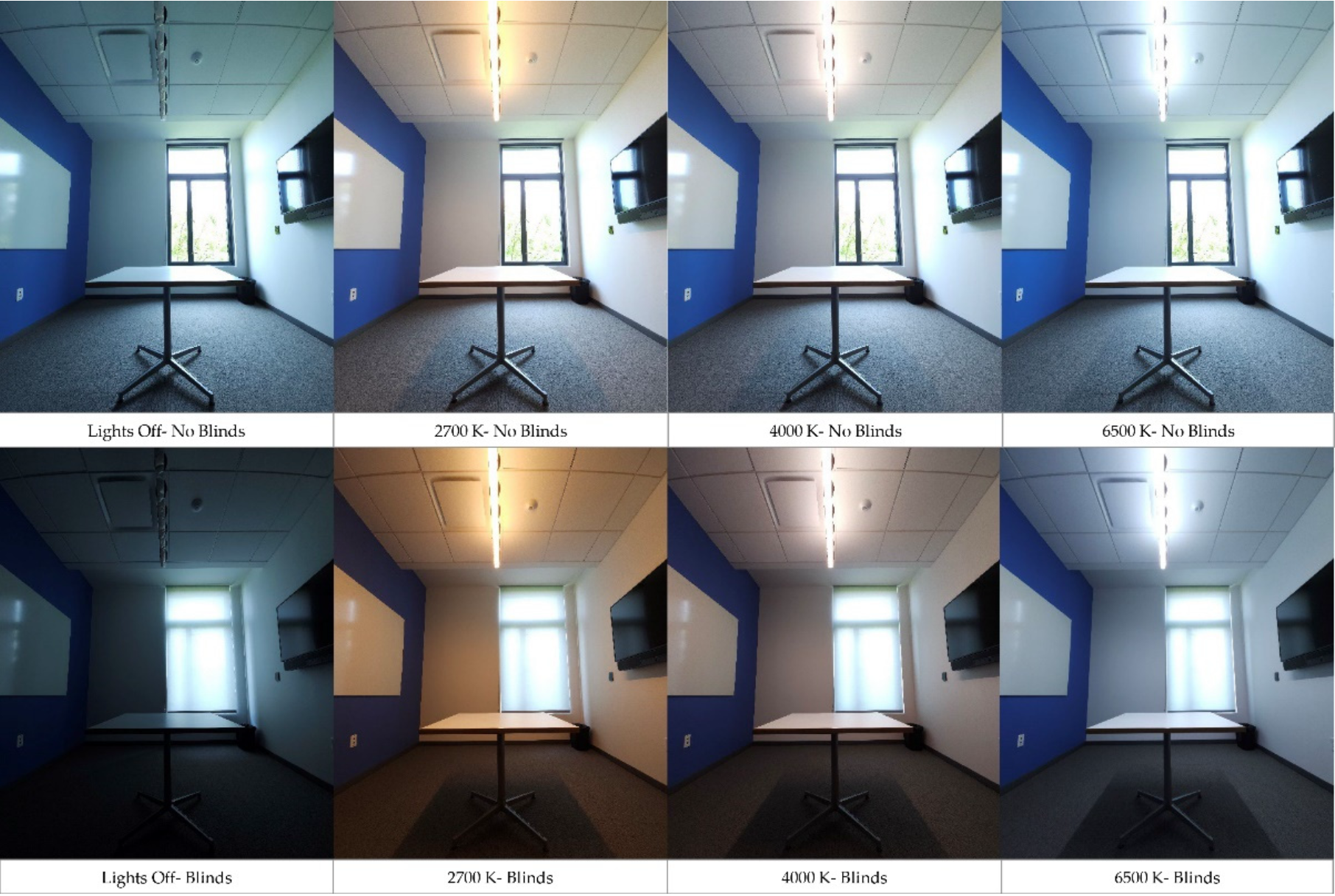Investigating the Impact of Combined Daylight and Electric Light on Human Perception of Indoor Spaces

People spend more than 90% of their time indoors, and, as such, improving indoor lighting quality can enhance their quality of life by positively influencing both physiological and psychological aspects. Numerous studies suggest that perceptions of a space vary depending on a number of lighting attributes present. Significant effort has been made across various fields to identify the spatial lighting conditions and attributes that impact human perception, although we lack studies that explore the impact of these conditions in tandem. This paper investigates how interior lighting conditions influence human impressions of room ambiance. The study examines 16 different interior scenes, considering factors such as sky condition (sunny vs. overcast), shading blinds position (open vs. closed), presence or absence of electric light (on vs. off), and Correlated Color Temperature (CCT) (2700 K, 4000 K, and 6500 K).